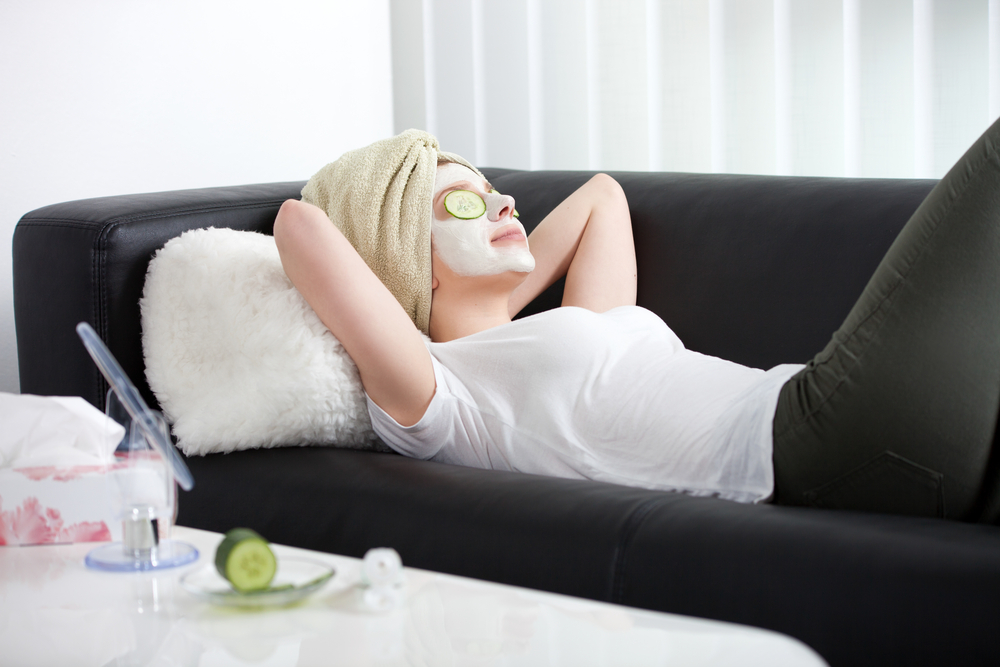
Taking the time we need to create some space between ourselves and the stress and problems we face is necessary for optimal health. Unless we put forth the effort to incorporate self-care into our daily life, we are on autopilot.
Being on autopilot is not sustainable. The stress of negative emotions, distorted beliefs about oneself and the world and suppressed emotion catches up with us eventually, leading to a disconnection from self, feeling unfulfilled, symptoms of anxiety and depression and illness/disease.
Paying attention to the moment is what mindfulness is all about. This is what can help us to connect with ourselves and have inner peace and contentment.
Jon Kabat Zinn, founder of Mindfulness-Based Stress Reduction and author of Wherever You Go There You Are writes, "this waking up goes hand in hand with what we might call 'wisdom,' a seeing more deeply into cause and effect and the interconnectedness of things, so that we are no longer caught in a dream-dictated reality of our own creation."
This "dream- (or nightmare) dictated" reality is our conditioned responses to our experiences that originate from fear. When we learn to recognize fear and all of the various ways it presents, (in short, anything that keeps us feeling helpless and powerless) we can choose a different way of being.
Here are some things you can do to create a successful at-home retreat:
Consider spending your time in silence. Being in silence helps us to direct our energy inward and connect with our internal thoughts and emotions. This cultivates self-connection, which is vital if we want to know ourselves, trust ourselves and be ourselves.
Organize and take care of household chores and other responsibilities beforehand. This way, you can be free to enjoy your downtime and get the most out of it. If you can't finish everything you'd like to, write it down or make a list so it will be less likely to distract you.
Plan your retreat. Be specific about your activities. Create an agenda by writing it down. You can get fancy and use fonts and colors that are visually pleasing to you. Make it look beautiful!
Obviously, you'll want to incorporate sitting meditation into your schedule. Some other suggestions are walking meditation, a body scan, a yoga session, an herbal tea break, mindful housework (keep it light), mindful lunch/dinner, breathing practices and, if desired, some outdoor time to walk or meditate in nature.
Disconnect from screens. This is obvious, but worth mentioning. Screens are a distraction that keep us feeling scattered and unfocused. Keep it to a minimum if you're using a meditation app or don't look at it at all if possible.
Stay focused on the nine attitudes of mindfulness. This includes non-judgement, patience, beginner's mind, non-striving, trust, letting go, gratitude, generosity and acceptance of what is.
Notice what you notice using all five senses. Bringing awareness to your senses will always ground you in the moment.
Include anything else that brings you joy. This can be a face mask, cucumbers for your eyes during a lying down meditation or aromatherapy with your favorite essential oils.
An at-home retreat can sustain us beyond the time we spend during our retreat into the days and weeks to come and motivate us to prioritize mindfulness practices.
It can help us gain perspective and give us the opportunity to be still and really listen to ourselves. The "white noise" we constantly encounter is no such place to cultivate this wisdom.
So, all the best with your at-home retreat. I hope you give it a try. It really does work!
Want the FREE Relieve Your Stress & Anxiety guide?
Helpful tips for immediate relief!
